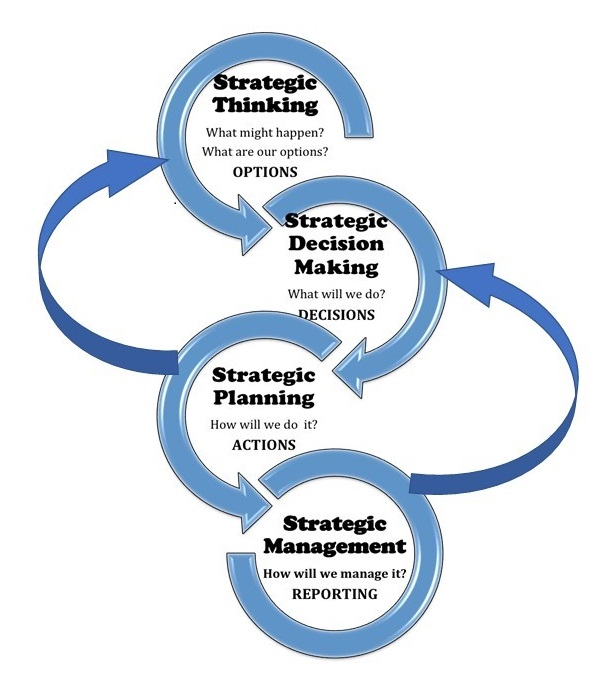The path to success requires deep analysis and understanding of market drivers and shifting technology. This can produce insights into opportunity which others have not realised. We call this strategic thinking.
Most academics agree that traditional models of strategy based primarily on strategic planning are not working. There is a need for deeper levels of strategic thinking to:
- find and develop unique opportunities to create value;
- challenge conventional thinking and assumptions about the current business model;
- understand the fundamental business drivers;
- focus on strategic intent, which allows individuals within an organisation to marshal and leverage their energy, to focus attention, to resist distraction, and to concentrate as long as it takes to achieve a goal; and
- understand that strategy is not driven by future intent alone. It is the gap between today’s reality and intent of the future that is critical.
One of the biggest factors for long-term business success is market position. A secure market position is achieved through competitive advantage, or moats. These must provide value for customers and be difficult to emulate or copy. They protect the business from encroaching competitors. Any business not actively building these moats will be at the mercy of shifting market dynamics, and will eventually be overtaken or killed.
Success begins with a vision of the future. This may be poorly articulated or dimly lit, but it provides the guiding light by which future decisions are made and resources allocated. Having clarity of purpose is the essential building block of future performance.
“…. strategic planning often spoils strategic thinking, causing managers to confuse real vision with the manipulation of numbers. And this confusion lies at the heart of the issue: the most successful strategies are visions, not plans.” Henry Minzberg, Harvard Business Review
When you engage with Transition Capital, we bring a strategic thinker’s mindset, seeking opportunity and advantage. We have numerous techniques to help your team to envision a successful future and the steps by which it can be built.
Four Elements of Strategy

Effective strategy involves four stages of strategy development.
- Strategic thinking –what are the big picture trends and technologies impacting on your business? What does the future hold? What might happen? What are your choices?
- Strategic decision-making – where are you going? What do you do? What don’t you do? Where do you want to be? And what will you do to achieve this?
- Strategic Planning – based on gap analysis, this determines how you will act to achieve your goals, and what resources you need to achieve them;
- Strategic management –or execution. How will you manage your resources? How will they be directed and how will you measure and track progress towards goals?
To find out more about strategic thinking, read our Blog post – http://www.transitioncapital.com.au/strategic-thinking-and-business-strategy
